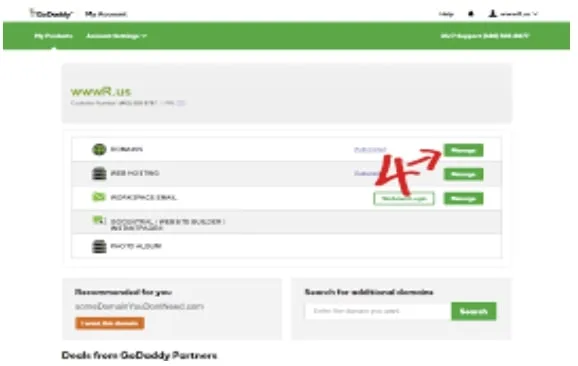Within the vast landscape of the web, adjusting the Domain Name System (DNS) settings is essential to
ensure the accessibility of your site and its functionality. GoDaddy is among the top domain registrars
offers a simple method to configure for your DNS settings. This guide will walk you through the steps
needed for managing the DNS settings efficiently.

Understanding DNS
Before we get into the details we’ll briefly talk about what DNS means. DNS functions as the Internet’s phonebook. When you input the URL into your internet browser and click on the link, the DNS system transforms it into an IP address. This allows your device to connect the server hosting your website. Controlling your DNS settings allows you to have the ability to control which domains you point to and the way they operate.
Related info: How to Remove Chrome //Net-Internals/#DNS with easy Steps
Logging into your GoDaddy account
- Login to your GoDaddy Account
- First, you must sign in with Your GoDaddy account. Go to the GoDaddy website, and then click
the “Sign in” button. Log in with your username and password in order to log in to your account. - access to the Domain Manager
- After logging in, navigate to your way to the “My Products” section and then click “Domains.”
The Domain Manager will be the next option. the domain Manager.
Controlling DNS Settings
- Choose the domain name
- Within the Domain Manager, locate the domain you wish to modify the DNS setting. Click the
particular domain name to open its administration page. - Select “Manage DNS”
- When you visit the page for domain management There’s an option that reads “Manage DNS.”
Just click it to go ahead. - Modify DNS Record
- Now, you’ll see a range of DNS records you are able to edit, which include the A record, CNAME,
and MX records. Based on the requirements of your business alter the records as needed.
Change Name Servers
- Change Name Servers
- If you wish to alter the name servers for your domain go to in the “Name Servers” section. Switch
between GoDaddy’s default names servers or create your own. - Save Modifications
- When you have changed the DNS servers, ensure you backup your changes. This is crucial since it
makes sure that DNS settings are up-to-date.
DNS Propagation
- The DNS propagation process: Understanding
- It is important to realize that DNS changes might not immediately take effect. The propagation of
DNS can last between a couple of minutes or up to 48 days. In this period, your site
may be temporarily inaccessible or may display outdated website content. - Checking Your Site
- When DNS propagation has been completed Test your site to make sure it’s working properly with the
latest setting.
Common DNS Problems
- Troubleshooting DNS Issues
- If you have any difficulties while working through this process, you should consider the most
common issues, such as errors within DNS records, insufficient names server updates or
inaccurate IP addresses. GoDaddy’s customer support can assist you with these problems.
Advanced DNS Configurations
If you’re interested in explore more deeply DNS administration, GoDaddy offers advanced configuration
options. You can design customized DNS records as well as establish subdomains that give you better
control of your web presence.
Utilizing Subdomains
Subdomains are extensions to the primary domain that can be used to serve a range of. For example, you
can create a subdomain like “blog.yourdomain.com” to host a blog while the main domain hosts your
website.
Custom DNS Records
Custom DNS records enable you to modify your DNS configurations to suit the specific requirements of
your business. This can include setting the text record (TXT) and typically are used to create the SPF
(Sender Policy Framework) and DKIM (DomainKeys Identified Mail) records that improve the delivery of
emails.
Regular DNS Maintenance
DNS configurations aren’t something that can be done in a single step. It’s important to check and revise
your DNS configurations when the business or website evolves. Routine checks will help you identify
problems and resolve them quickly.
Get Expert Advice
If you’re finding the management of DNS settings difficult or have trouble with DNS settings do not
hesitate to ask for help. GoDaddy’s customer support is willing to answer any queries or questions that
you may need to address.
Understanding the DNS settings and how to manage them is essential to maintain an effective and safe
online presence. Following the instructions in this document and taking into consideration the role DNS
plays in the performance of your website, security, as well as SEO, you’ll be able to make sure that your
site runs seamlessly and effectively.
If you’ve learned how to configure GoDaddy DNS preferences and the importance to do so it’s time to
control your web presence. If you have additional queries or require help the GoDaddy support team will
be there for you.
Conclusion
The process of setting GoDaddy DNS settings can appear complicated, but following this tutorial, you will
be able to control your domain’s DNS efficiently. Be aware that any changes could be slow to propagate
over the web and so, be patient. If you follow these guidelines then you’ll see your website operating
smoothly in a short period of time.
